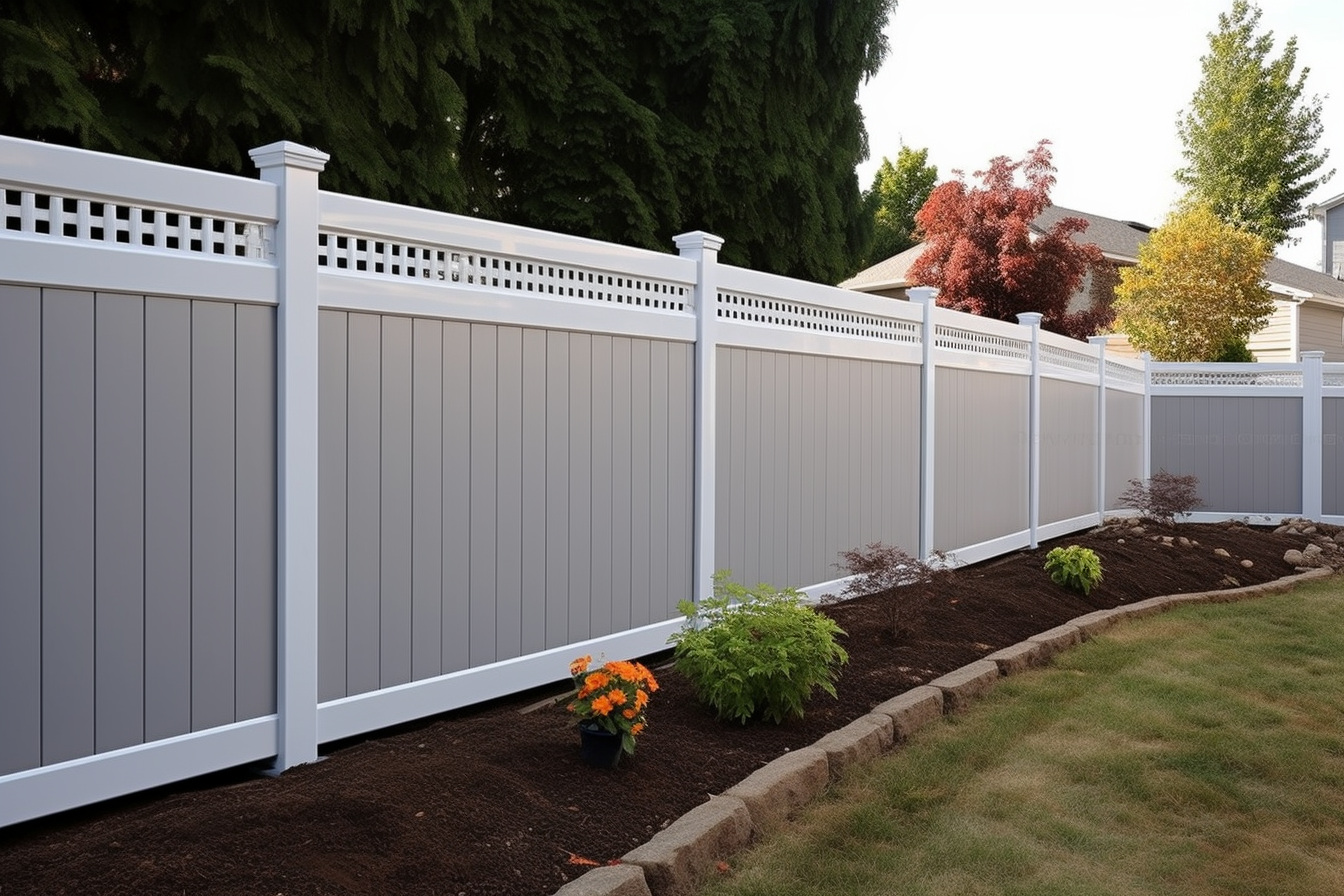Comprehensive Guide to Garden Fences and Walls in 2025: Costs, Designs, and Home Depot’s Trex Composite Panels
Did you know a typical 6-foot privacy fence costs about $35 per linear foot in 2025? Whether you want wood, vinyl, metal, or innovative composite panels, understanding costs, trends, and maintenance can help you choose the perfect fence to boost privacy and curb appeal with lasting value.

Understanding the Cost of Garden Fences and Walls in 2025
The average cost to install a fence in the US is approximately $23 per linear foot, with variation influenced by material, height, style, and installation complexity. For a 6-foot privacy fence—a common height for backyard privacy—the estimate is around $35 per linear foot. This price generally includes materials, labor, permits (commonly $20–$60), and possible site preparation such as tree removal or land leveling.
Breakdown of Costs:
- Materials & Labor: Labor typically accounts for about half of the total cost, averaging near $1,600 for an average fencing project.
- Gates: Gate installation may range from $150 to over $2,000, influenced by size and technological features like automation.
- Additional Preparation: Potential expenses include tree removal ($200–$2,000), land grading ($1,000–$3,200), and removal of existing fencing ($3–$5 per linear foot).
- Maintenance Costs: Wood fences may require staining or painting at approximately $3.50 to $13 per linear foot if done professionally. Composite and vinyl fences are generally designed to minimize maintenance needs.
For example, installing a 100-foot privacy fence can be estimated at about $3,500, with costs adjusting proportionally based on length.
Common Fence Types and Materials for 2025 Garden and Yard Fencing
Choosing the right material affects cost, durability, visual appeal, and upkeep requirements:
-
Wood Fences: Traditional and widely used options include:
- Redwood: Known for durability and resistance to insects and rot.
- Cedar: Moisture and insect resistant, naturally weathering to a gray hue.
- Southern Pine: Economical and widespread, generally requiring chemical treatment.
Wood is valued for its natural appearance and flexibility but typically involves scheduled upkeep such as sealing or staining.
- Metal Fences: Materials such as wrought iron and aluminum offer durability and lower maintenance at a higher initial price point. These fences provide security and often have open designs for visibility.
- Vinyl Fences: A cost-effective, maintenance-conscious choice that resists weather effects and fading, frequently selected for privacy and decorative uses.
- Composite Fences: These combine wood aesthetics with plastics’ durability. Composite fencing is favored in 2025 for its environmental benefits, resilience, and minimal maintenance.
- Chain-Link Fences: Typically the most affordable, useful for defining boundaries and pet containment but less suited for privacy without accessories such as slats.
- Specialty Fences: Including split rail for a rustic look, invisible fences for pets, pool safety fences, and barbed wire for livestock are designed for specific purposes.
Contemporary Fence Design Approaches in 2025
Modern fences often emphasize simplicity, privacy, and sustainability:
- Designs often feature clean, straightforward lines with horizontal or vertical board arrangements.
- Preference for natural, muted color schemes such as grays, browns, and soft greens helps fences blend with landscaping.
- Some designs focus on full privacy, using interlocking or tongue-and-groove boards to limit visibility through gaps.
- Emphasis on durability and low maintenance directs many consumers toward composite and vinyl options.
- Use of recycled materials and environmentally friendly manufacturing processes is increasingly common.
Information on Home Depot’s Trex Seclusions Composite Fence Panels
Home Depot provides the Trex Seclusions fencing panel as an option reflecting current composite fence trends.
Features include:
- Dimensions: 6 feet tall by 8 feet wide panels.
- Material Composition: Manufactured with recycled wood fibers and plastic, supporting environmentally conscious choices.
- Design: Interlocking pickets create a privacy barrier without gaps, with aesthetics maintained on both sides of the panel.
- Durability: Resistant to common issues such as warping, rot, and sagging, and designed to withstand wind speeds up to 110 mph.
- Maintenance: Designed to require no painting or sealing after installation.
- Warranty: Offers 25-year residential and 10-year commercial warranty coverage.
- Installation Details: Panels are mounted on 8-foot post centers, which may reduce post quantity and installation effort.
- Kit Contents: Includes 19 pickets, top and aluminum bottom rails, bottom rail covers, brackets, and screws. Posts and caps are sold separately.
While exact total installed costs are not specified publicly by Home Depot, these panels represent a composite fencing solution characterized by durability, privacy, and potentially lower installation labor compared to some wood alternatives.
Installation Considerations
- Employing a professional fencing contractor is generally recommended, especially for composite or complex installations, to ensure compliance with local regulations and appropriate construction quality.
- Permits for fence construction typically range from $20 to $60 and might be included in contractor bids.
- Installing fences during off-peak seasons like fall or winter may provide more scheduling flexibility and potential cost advantages.
- DIY installation or maintenance may be practical for certain tasks such as fence removal or wood fence painting but could introduce challenges with complex materials.
- Local regulations often limit fence height to about 6-8 feet for privacy fences; verifying local codes is advisable before proceeding.
- Maintaining communication with neighbors is encouraged to support community relations during or before fence installation.
Visual Examples and Panel Styles for Garden Fencing
Garden fences vary in style and function, examples include:
- Classic white picket fences, symbolic and modest boundary markers.
- Tall privacy fences with vertical or horizontal board patterns for visual screening.
- Decorative metal fences, such as wrought iron, that combine aesthetics with partial visibility.
- Composite fences like the Trex panels, showcasing wood-like texture and modern color options.
Retail websites, including Home Depot’s, provide images and design examples that can aid in selecting appropriate colors and panel configurations tailored to different yard sizes and styles.
In 2025, homeowners have a range of garden fence and wall options to suit diverse needs and budgets. Estimates indicate costs around $35 per linear foot for a 6-foot privacy fence, with common materials including wood, vinyl, composite, and metal. The Trex Seclusions composite fence panels offered by Home Depot reflect current trends toward combining durability, privacy, and ease of maintenance.
When planning a fencing project, consider all relevant expenses such as materials, labor, permits, gate additions, site preparation, and maintenance requirements. Current design preferences often emphasize clean lines, privacy enhancement, and sustainable materials, making this year favorable for investing in quality fencing tailored to your outdoor space.
Sources
- Angi - How Much Does Fence Installation Cost? (2025)
- Home Depot - Trex Seclusions Composite Fence Panel Kit
- Home Depot - Types of Fences and Designs (2025)
Disclaimer: All content, including text, graphics, images and information, contained on or available through this web site is for general information purposes only. The information and materials contained in these pages and the terms, conditions and descriptions that appear, are subject to change without notice.




